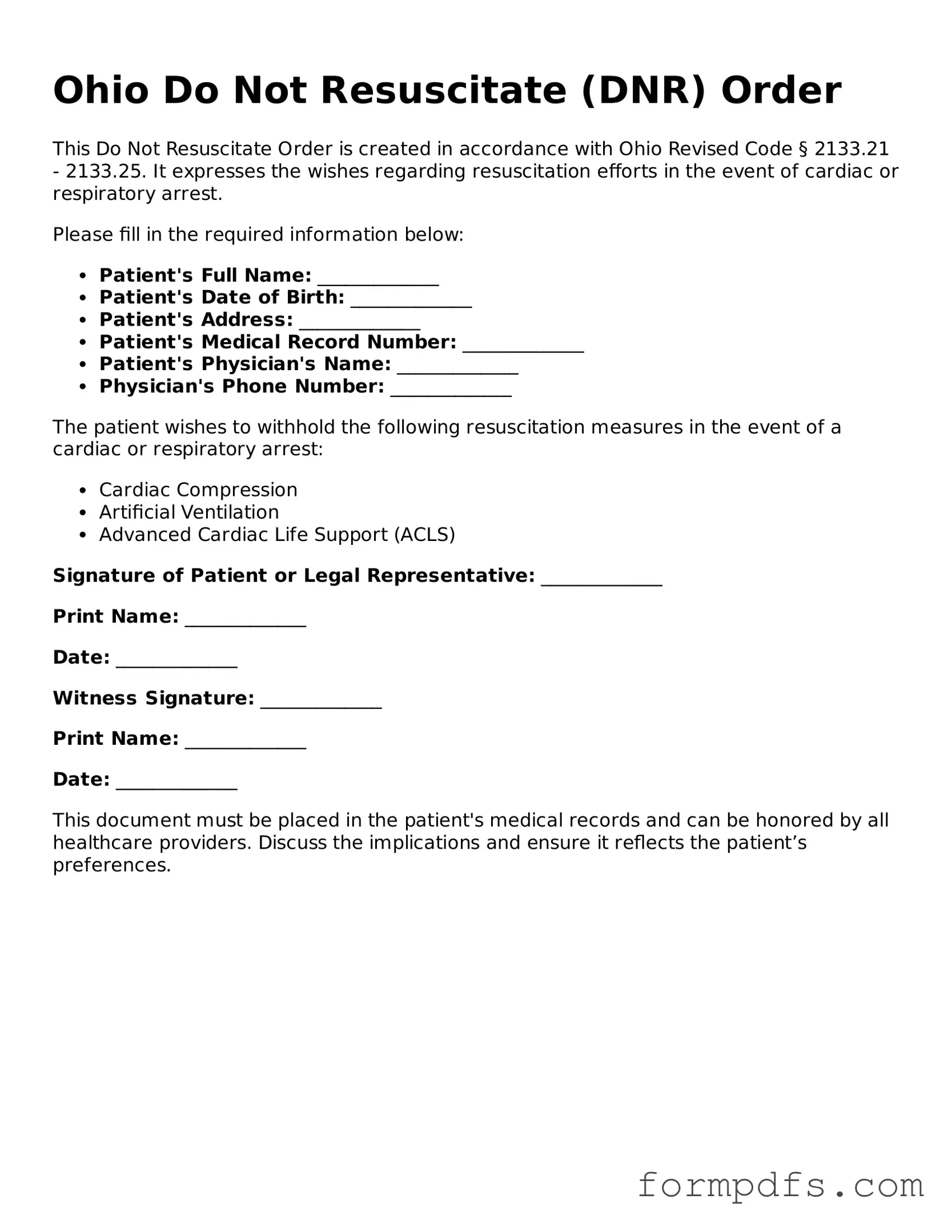What is a Do Not Resuscitate (DNR) Order in Ohio?
A Do Not Resuscitate Order is a legal document that allows a person to refuse cardiopulmonary resuscitation (CPR) and other life-saving measures in the event of a medical emergency. In Ohio, this order is intended for individuals who wish to avoid aggressive interventions when they are facing a terminal condition or are in a state of irreversible decline.
Who can complete a DNR Order in Ohio?
In Ohio, a DNR Order can be completed by an adult who is capable of making informed decisions about their medical care. If the individual is unable to make decisions, a legal representative, such as a healthcare proxy or a family member, may complete the order on their behalf, provided they have the authority to do so.
How do I obtain a DNR Order form in Ohio?
The DNR Order form can be obtained from various sources, including hospitals, healthcare providers, and the Ohio Department of Health website. It is important to ensure that the form is the official version recognized by Ohio law to ensure its validity.
What information is required on the DNR Order form?
The DNR Order form typically requires personal information about the individual, including their name, date of birth, and medical history. Additionally, it must be signed by the individual or their authorized representative, as well as a physician, confirming that the individual understands the implications of the order.
Is a DNR Order legally binding in Ohio?
Yes, a properly completed and signed DNR Order is legally binding in Ohio. Emergency medical personnel are required to honor the DNR Order in the event of a medical emergency. It is crucial to keep a copy of the order in an easily accessible location, such as on the refrigerator or with other important medical documents.
Can I change or revoke my DNR Order?
Yes, individuals have the right to change or revoke their DNR Order at any time. To do this, it is advisable to complete a new DNR Order form or to communicate the decision clearly to healthcare providers. Any previous orders should be destroyed to avoid confusion.
Will a DNR Order affect my overall medical care?
A DNR Order specifically addresses resuscitation efforts and does not impact other aspects of medical care. Individuals with a DNR Order will still receive appropriate medical treatment, comfort care, and pain management as needed. It is essential to communicate your wishes clearly with your healthcare team.
What should I discuss with my family regarding a DNR Order?
It is important to have open and honest conversations with family members about your wishes regarding a DNR Order. Discuss the reasons for your decision, your values, and your preferences for end-of-life care. Ensuring that your loved ones understand your choices can help them advocate for you in medical situations.
Where should I keep my DNR Order?
Keeping your DNR Order in a prominent and easily accessible location is crucial. Many people choose to place a copy on their refrigerator or carry a card in their wallet. Informing family members and caregivers about the location of the order can also ensure that it is honored when needed.
